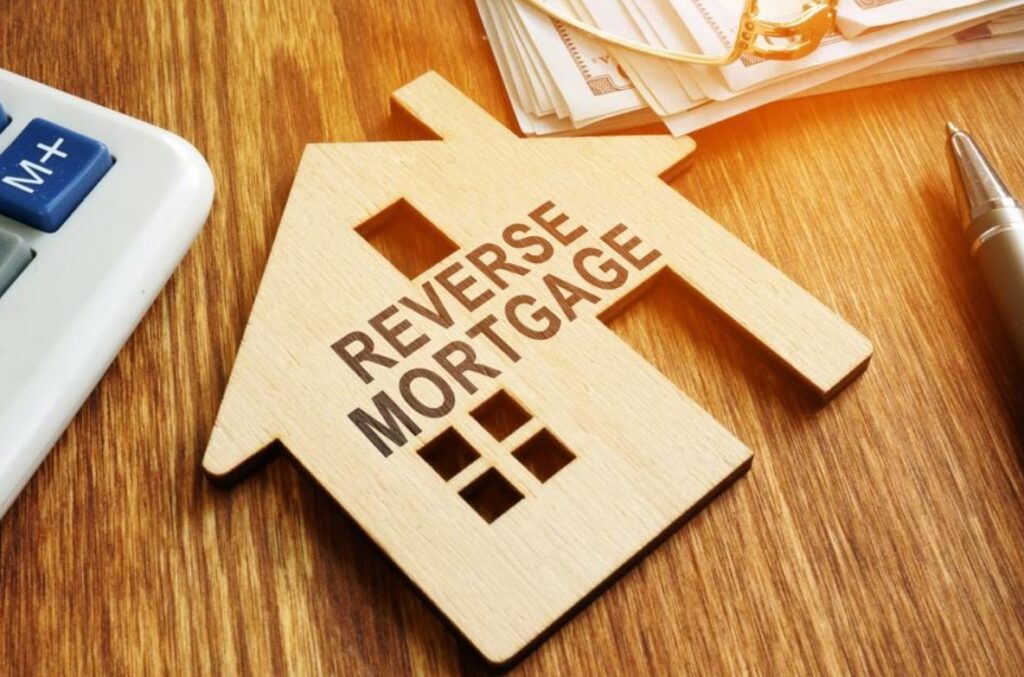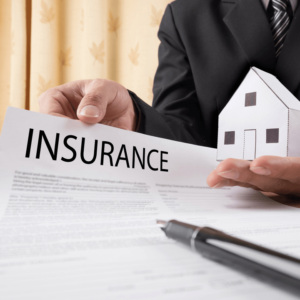Breaking News: All about Reverse Mortgages
123Movies [#PIN-1641]A reverse mortgage is a way for homeowners ages 62 and older to leverage the equity in their home. With a reverse mortgage, a homeowner who owns their home outright — or at least has considerable equity to draw from — can withdraw a portion of their equity without having to repay it until they leave the home.
What is a reverse mortgage?
A reverse mortgage is a type of loan that allows homeowners ages 62 and older, typically who’ve paid off their mortgage, to borrow part of their home’s equity as tax-free income. Unlike a regular mortgage in which the homeowner makes payments to the lender, with a reverse mortgage, the lender pays the homeowner.
Homeowners who opt for this kind of mortgage don’t have a monthly payment and don’t have to sell their home (in other words, they can continue to live in it), but the loan must be repaid when the borrower dies, permanently moves out or sells the home.
One of the most popular types of reverse mortgages is the Home Equity Conversion Mortgage (HECM), which is backed by the federal government.
How does a reverse mortgage work?
Despite the reverse mortgage concept in practice, qualified homeowners may not be able to borrow the entire value of their home even if the mortgage is paid off.
The amount a homeowner can borrow, known as the principal limit, varies based on the age of the youngest borrower or eligible non-borrowing spouse, current interest rates, the HECM mortgage limit ($765,600 in 2020) and the home’s value.
Homeowners are likely to receive a higher principal limit the older they are, the more the property is worth and the lower the interest rate. The amount might increase if the borrower has a variable-rate HECM.
With a variable rate, options include:
- Equal monthly payments, provided at least one borrower lives in the property as their primary residence
- Equal monthly payments for a fixed period of months agreed on ahead of time
- A line of credit that can be accessed until it runs out
- A combination of a line of credit and fixed monthly payments for as long as you live in the home
- A combination of a line of credit plus fixed monthly payments for a set length of timeIf you choose a HECM with a fixed interest rate, on the other hand, you’ll receive a single-disbursement, lump-sum payment.
The interest on a reverse mortgage accrues every month, and you’ll still need to have adequate income to continue to pay for property taxes, homeowners insurance and upkeep of the home.
What can a reverse mortgage be used for?
Supplementing retirement income, covering the cost of needed home repairs or paying out-of-pocket medical expenses are common and acceptable uses of reverse mortgage proceeds, according to Bruce McClary, spokesperson for the National Foundation for Credit Counseling.
“In each situation where regular income or available savings are insufficient to cover expenses, a reverse mortgage can keep seniors from turning to high-interest lines of credit or other more costly loans,” McClary says.
Reverse mortgage requirements
To be eligible for a reverse mortgage, the primary homeowner must be age 62 or older. However, if a spouse is under 62, you may still be able to get a reverse mortgage if you meet other eligibility criteria. For example:
- You must own your home outright or have a single primary lien you hope to borrow against.
- Any existing mortgage you have must be paid off using the proceeds from your reverse mortgage.
- You must live in the home as your primary residence.
- You must remain current on property taxes, homeowners insurance and other mandatory legal obligations, such as homeowners association dues.
You must participate in a consumer information session led by a HUD-approved counselor.
You must maintain your property and keep it in good condition.
Your home must be a single-family home, a multi-unit property with up to four units, a manufactured home built after June 1976, a condominium or a townhouse.
“Seniors should be careful to make the most of the loan by budgeting carefully in order to avoid running out of funds too soon and to be sure that taxes and insurance are paid as agreed,” cautions McClary.
What are the types of reverse mortgages?
There are different types of reverse mortgages, and each one fits a different financial need.
Home Equity Conversion Mortgage (HECM) – The most popular type of reverse mortgage, these federally-insured mortgages usually have higher upfront costs, but the funds can be used for any purpose. Although widely available, HECMs are only offered by Federal Housing Administration (FHA)-approved lenders, and before closing, all borrowers must receive HUD-approved counseling.
Proprietary reverse mortgage – This is a private loan not backed by the government. You can typically receive a larger loan advance from this type of reverse mortgage, especially if you have a higher-valued home.
Single-purpose reverse mortgage – This mortgage is not as common as the other two, and is usually offered by nonprofit organizations and state and local government agencies. Borrowers can only use the loan (which is typically for a much smaller amount) to cover one specific purpose, such as a handicap accessible remodel, explains Jackie Boies, a senior director of housing and bankruptcy services for Money Management International, a nonprofit debt counselor based in Sugar Land, Texas.
How much money can you get from a reverse mortgage?
The amount of money you can get from a reverse mortgage depends upon a number of factors, according to Boies, such as the current market value of your home, your age, current interest rates, the type of reverse mortgage, its associated costs and your financial assessment.
The amount you receive will also be impacted if the home has any other mortgages or liens. If there’s a balance from a home equity loan or home equity line of credit (HELOC), for example, or tax liens or judgments, those will have to be paid with the reverse mortgage proceeds first.
“Regardless of the type of reverse mortgage, you shouldn’t expect to receive the full value of your home,” Boies says. “Instead, you’ll get a percentage of that value.”
How much does a reverse mortgage cost?
The closing costs for a reverse mortgage aren’t cheap, but the majority of HECM mortgages allow homeowners to roll the costs into the loan so you don’t have to shell out the money upfront. Doing this, however, reduces the amount of funds available to you through the loan.
Here’s a breakdown of HECM fees and charges, according to HUD:
Mortgage insurance premiums (MIP) – There is a 2 percent initial MIP at closing, as well as an annual MIP equal to 0.5 percent of the outstanding loan balance. The MIP can be financed into the loan.
Origination fee – To process your HECM loan, lenders charge the greater of $2,500 or 2 percent of the first $200,000 of your home’s value, plus 1 percent of the amount over $200,000. The fee is capped at $6,000.
Servicing fees – Lenders can charge a monthly fee to maintain and monitor your HECM for the life of the loan. Monthly servicing fees cannot exceed $30 for loans with a fixed rate or an annually adjusting rate, or $35 if the rate adjusts monthly.
Third-party fees – Third parties may charge their own fees, as well, such as for the appraisal and home inspection, a credit check, title search and title insurance, or a recording fee.
Keep in mind that the interest rate for reverse mortgages tends to be higher, which can also add to your costs. Rates can vary depending on the lender, your credit score and other factors.
Reverse mortgage pros and cons
While borrowing against your home equity can free up cash for living expenses, the mortgage insurance premium and origination and servicing fees can add up. Here are the advantages and disadvantages of a reverse mortgage.
Pros
- Borrower doesn’t need to make monthly payments toward their loan balance
- Proceeds can be used for living and healthcare expenses, debt repayment and other bills
- Funds can help borrowers enjoy their retirement
- Non-borrowing spouses not listed on the mortgage can remain in the home after the borrower dies
- Borrowers facing foreclosure can use a reverse mortgage to pay off the existing mortgage, potentially stopping the foreclosure
Cons
- Borrower must maintain the house and pay property taxes and homeowners insurance
- A reverse mortgage forces you to borrow against the equity in your home, which could be a key source of retirement funds
- Fees and other closing costs can be high and will lower the amount of cash that is available
Is a reverse mortgage a good idea?
A reverse mortgage can be a help to homeowners looking for additional income during their retirement years, and many use the funds to supplement Social Security or other income, meet medical expenses, pay for in-home care and make home improvements, Boies says.
There are also flexible ways to receive the money from the reverse mortgage: a lump sum, a monthly payment, a line of credit or a combination.
Plus, if the value of the home appreciates and becomes worth more than the reverse mortgage loan balance, you or your heirs may receive the difference, Boies explains.
The opposite, however, can pose a problem: If the balance exceeds the home’s value, you or your heirs may need to foreclose or otherwise give ownership of the home back to the lender.
There are also potential complications involving others who live in the home with the borrower, and what might happen to them if the borrower dies. Family members who inherit the property will want to pay close attention to the details of what is necessary to manage the loan balance when the borrower dies.
“There are provisions that allow family to take possession of the home in those situations, but they must pay off the loan with their own money or qualify for a mortgage that will cover what is owed,” McClary says.
Additionally, while not all reverse mortgage lenders use high-pressure sales tactics, some do use them to attract borrowers.
“It is always best to receive guidance from a nonprofit agency that offers reverse mortgage counseling before signing a loan agreement,” McClary recommends. “Taking advice from a celebrity spokesperson or a sales agent without getting the facts from a trusted, independent resource can leave you with a major financial commitment that may not be best for your circumstances.”
Alternatives to a reverse mortgage
If you’re not sold on taking out a reverse mortgage, you have options. In fact, if you’re not yet 62 (and ideally not turning 62 soon), a home equity loan or HELOC is likely a better option.
Both of these loans allow you to borrow against the equity in your home, although lenders limit the amount to 80 percent to 85 percent of your home’s value, and with a home equity loan, you’ll have to make monthly payments. (With a HELOC, payments are required once the draw period on the line of credit expires.)
The closing costs and interest rates for home equity loans and HELOCs also tend to be significantly lower than what you’ll find with a reverse mortgage.
Aside from a home equity loan, you could also consider:
Cutting expenses – Trimming discretionary expenses can help you stay in your home long-term. If you need help with a necessary bill, consider contacting a local assistance organization (the Administration for Community Living can help you find one), which may be able to assist with fuel payments, utility bills and needed home repairs.
Downsizing – If you’re able and willing to move, selling your home and moving to a smaller, less expensive one can give you access to your existing home’s equity. You can use the proceeds of the sale to pay for another house in cash or pay off other debt.
Refinancing – If you haven’t paid off your mortgage yet, you could look into refinancing the loan to lower your monthly payments and free up the difference. Make sure to weigh the closing costs and the new loan terms, however, to see how these will affect your finances in your retirement years.
How to avoid reverse mortgage scams
As you shop for a reverse mortgage and consider your options, be on the lookout for two of the most common reverse mortgage scams:
Contractor “loans” – Some contractors will try to convince you to get a reverse mortgage when touting home improvement services.
Veteran “loans” – The Department of Veterans Affairs (VA) doesn’t provide reverse mortgages, but you may see ads promising special deals for veterans, such as a fee-free reverse mortgage to attract borrowers.
The best way to avoid a reverse mortgage scam is to be aware and vigilant. If an individual or company is pressuring you to sign a contract, for example, it’s likely a red flag.
What will happen in "Breaking News: All about Reverse Mortgages" For some more news when it comes to "Breaking News: All about Reverse Mortgages" in video form, just check out the latest at the below of this article! After you watch it. remember to subscribe Channel ET20Today
Title: Breaking News: All about Reverse Mortgages
Source: ()
As you turn on the #PIN-1641, a world of curiosity unfolds before your eyes. The screen flickers to life, illuminating the room with vibrant colors and captivating visuals. The curious tone in your mind wonders about the intriguing possibilities that lie ahead.
#PIN-1641 ChannelsWith a sense of anticipation, you flip through channels, each one offering something completely different. You stumble upon a documentary, showcasing the fascinating lives of penguins in the Antarctic. The camera captures their graceful movements as they waddle across the icy terrain. The narrator's voice is filled with excitement as they describe the penguins diving into the frigid waters, embarking on epic journeys in search of food.
#PIN-1641 NextNext, you stumble upon a cooking show, where a renowned chef shares their culinary expertise with viewers. The curious tone within you absorbs the tantalizing aromas and visually appealing presentations. The chef's descriptions of flavors, textures, and cooking techniques awaken your senses and ignite a desire to experiment in the kitchen.
Talk ShowAs the evening progresses, you tune into a talk show, filled with lively conversations and thought-provoking discussions. A panel of experts deliberates on pressing issues, sharing diverse perspectives that challenge your own thoughts and beliefs. The curious tone within you becomes engaged, questioning and analyzing the arguments presented, ready to expand your understanding of the world.
A Tale of Love and ResilienceFinally, you stumble upon a heartwarming movie, a tale of love and resilience. The curious tone within you becomes sentimental, following the emotional journey of the characters, their triumphs, and their hardships. You feel a sense of connection as their stories unfold on the screen, reminding you of the complexities and beauty of human experience.
TelevisionAs you reach for the remote to switch off the television, the curious tone within you satisfies its appetite for knowledge and entertainment. The TV screen fades to darkness, but the memories and insights gained remain, fueling your desire to explore further and discover even more wonders that await in the vast landscape of television.










